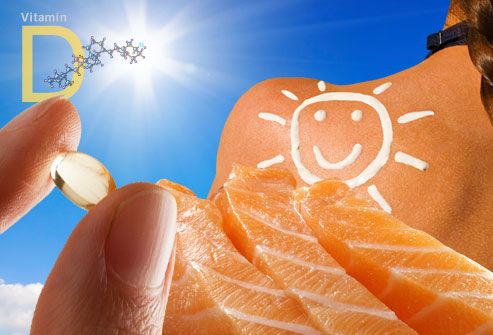
Vitamin D: Wonder Pill or Overkill?
Wouldn?t it be great if one vitamin could build stronger bones and protect against diabetes, multiple sclerosis, cancer, heart disease, and depression? Or even help you lose weight? Researchers have high hopes for vitamin D — which comes from our skin’s reaction to sunlight, a few foods, and supplements. Learn the facts in the slides ahead ? and see who’s at risk for a "D" deficiency.
Normal Spongy Bone Matrix
Vitamin D Boosts Bone Health
Vitamin D is critical for strong bones, from infancy into old age. It helps the body absorb calcium from food. In older adults, a daily dose of "D" and calcium helps to prevent fractures and brittle bones. Children need "D? to build strong bones and prevent rickets, a cause of bowed legs, knock knees, and weak bones. Adding the vitamin to milk in the 1930s helped to nearly eliminate the disorder. Shown here is the honeycombed structure inside a healthy bone.
woman with ms in wheelchair
Vitamin D and Multiple Sclerosis
Multiple sclerosis (MS) is more common far away from the sunny equator. For years, experts suspected a link between sunlight, vitamin D levels, and this autoimmune disorder that damages the nerves. One newer clue comes from a study of a rare gene defect that leads to low levels of vitamin D ? and a higher risk of MS. Despite these links, there’s not enough evidence to recommend vitamin D for the prevention or treatment of MS.
woman checking glucose
Vitamin D and Diabetes
Some studies have shown a link between a low vitamin D level and type 2 diabetes — the more common version of this blood sugar disorder. So, can boosting your vitamin D levels help ward off the disease? There’s not enough proof for doctors to recommend taking this supplement to prevent type 2 diabetes. Excess body fat may play a role in diabetes and low levels of vitamin D.
woman jumping rope
Vitamin D and Weight Loss
Studies have shown that people who are obese often have low blood levels of vitamin D. Body fat traps vitamin D, making it less available to the body. It’s not clear whether obesity itself causes a low vitamin D level or if it’s the other way around. But one small study of dieters suggests that adding vitamin D to a calorie-restricted diet may help overweight people with low vitamin D levels lose weight more easily.
Depressed Woman Sitting on Bed
Low "D" and Depression
Vitamin D plays a role in brain development and function. One promising study showed that large doses of vitamin D could lessen the symptoms of mild depression. But other studies show mixed results. The best bet is to talk with your doctor about whether vitamin D could ward off the symptoms of depression.
Man Laying on Grass
How Does Sun Give You Vitamin D?
When the sun shines on bare skin, your body makes its own vitamin D. This is the major source of vitamin D, but it’s not enough for many people. Fair-skinned people might get enough in 5-10 minutes on a sunny day, a few times a week. But cloudy days, the low light of winter, and the use of sun block (important to avoid skin cancer) all interfere. Older people and those with darker skin tones don?t make as much from sun exposure. Experts say it’s better to rely on food and supplements.
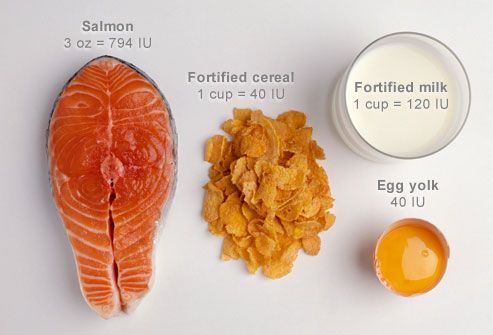
Dining With Vitamin D
Many of the foods we eat have no naturally occurring vitamin D. Fish such as salmon, swordfish, or mackerel is one big exception — and can provide a healthy amount of vitamin D in one serving. Other fatty fish such as tuna and sardines have some "D," but in much lower amounts. Small amounts are found in egg yolk, beef liver, and fortified foods like cereal and milk. Cheese and ice cream do not usually have added vitamin D.

Start Your Day With Vitamin D
Choose your breakfast foods wisely, and you can get a substantial amount of vitamin D. Most types of milk are fortified, including some soy milks. Orange juice, cereal, bread, and some yogurt brands also commonly have added vitamin D. Check the labels to see how much ?D? you?re getting.
Vitamin D Supplements
Vitamin D Supplements
For people who want to take vitamin D in pill form, there are two kinds: D2 (ergocalciferol), which is the type found in food, and D3 (cholecalciferol), which is the type made from sunlight. They’re produced differently, but both can raise vitamin D levels in your blood. Most multivitamins have 400 IU of vitamin D. Check with your health care provider for the best supplements for your needs.

Are You Vitamin D Deficient?
Problems converting vitamin D from food or sunshine can set you up for a deficiency. Factors that increase your risk include:
- Age 50 or older
- Dark skin
- A northern home
- Overweight, obese, gastric bypass surgery
- Milk allergy or lactose intolerance
- Liver or digestive diseases, such as Crohn’s disease or celiac
xray of pelvis with osteomalacia
Symptoms of "D" Deficiency
Most people with low blood levels of vitamin D don’t notice any symptoms. A severe deficiency in adults can cause soft bones, called osteomalacia (shown here). The symptoms include bone pain and muscle weakness. In children, a severe deficiency can lead to rickets and symptoms of soft bones and skeletal problems. Rickets is rare in the United States
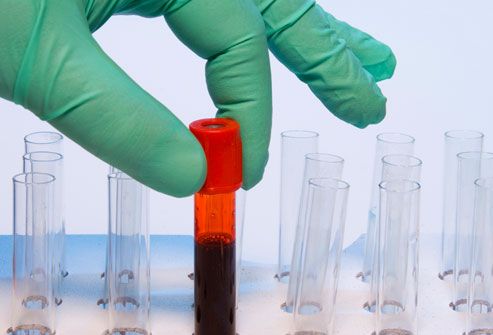
Testing Your Vitamin D Level
There’s a simple blood test used to check your vitamin D level, called the 25-hydroxyvitamin D test. Current guidelines by the Institute of Medicine set a blood level of 20 nanograms per milliliter (ng/mL) as a goal for good bone health and overall health. However, some doctors say people should go higher, to about 30 ng/mL to get the full health benefits of vitamin D.
Vitamin D Daily Allowances
How Much Vitamin D Do You Need?
The recommended dietary allowance for vitamin D is 600 IU (international units) per day for adults up to age 70. People aged 71 and older should aim for 800 IU from their diet. Some researchers recommend much higher doses of vitamin D, but too much vitamin D can hurt you. Above 4,000 IU per day, the risk for harm rises, according to the Institute of Medicine.

Daily "D" for Breast-feeding Babies
Breast milk is best, but it doesn?t have much vitamin D. Breastfed babies need 400 IU of vitamin D until they’re weaned to fortified formula and can drink at least one liter (about 4 ¼ cups) every day. Starting at age 1, babies drinking fortified milk no longer need a vitamin D supplement. Be careful not to give too much vitamin D to babies. High doses can cause nausea, vomiting, loss of appetite, excessive thirst, muscle aches, or more serious symptoms.
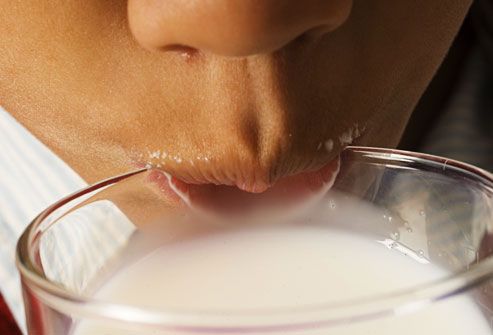
Vitamin D for Older Children
Most children and adolescents don?t get enough vitamin D from drinking milk. They should have a supplement with 400 IU to 600 IU. That amount is often included in chewable multivitamins. Children with some chronic diseases such as cystic fibrosis may be at increased risk for vitamin D deficiency. Talk to your child?s doctor about the need for extra vitamin D.
Woman Doing Yoga on Dock
How Much Is Too Much Vitamin D?
Some researchers suggest taking far more vitamin D than the 600 IU daily guideline for healthy adults. But too much be dangerous. Very high doses of vitamin D can raise your blood calcium level, causing damage to blood vessels, heart, and kidneys. The Institute of Medicine sets the upper tolerable limit at 4,000 IU of vitamin D per day. You can?t get too much vitamin D from the sun. Your body simply stops making more. But sun exposure without sunscreen can raise your risk of skin cancer.

Drugs That Interact With Vitamin D
Some drugs cause your body to absorb less vitamin D. These include laxatives, steroids, anti-seizure and anti-cholesterol medicines. If you take digoxin, a heart medicine, too much vitamin D can raise the level of calcium in your blood and lead to an abnormal heart rhythm. It’s important to discuss your use of vitamin D supplements with your doctor or pharmacist.
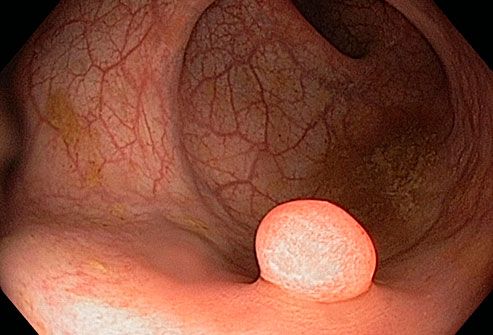
Vitamin D and Colon Cancer
It?s too soon to make a strong case for vitamin D as an overall cancer-fighter. But newer studies suggest that people with higher levels of vitamin D in their blood may have a lower risk for colon cancer.

Vitamin D and Other Cancers
Headlines tout vitamin D as a way to prevent breast and prostate cancer. But researchers don?t yet have enough evidence to say that the benefits are real. And, vitamin D may boost the risk of pancreatic cancer. The VITAL Study — a Harvard university study — of vitamin D and omega-3 is following 20,000 volunteers to find answers. In the meantime, a healthy body weight, regular exercise, and the diet guidelines of the American Cancer Society may help prevent cancer.
Blood Pressure Measurement
Vitamin D and Heart Disease
Low levels of vitamin D have been linked to a greater risk of heart attack, stroke, and heart disease. Still, it?s not clear whether boosting vitamin D will reduce heart risks and how much vitamin D is needed. Very high levels of vitamin D in the blood can actually harm blood vessels and the heart by increasing the amount of calcium in the bloodstream.
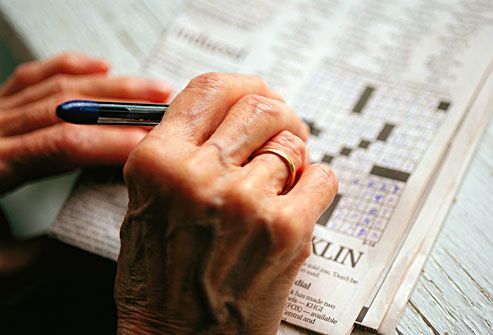
A Factor in Dementia?
Older people are more likely to have vitamin D levels that are too low. Researchers found that older people with vitamin D deficiency performed poorly on tests of memory, attention, and reasoning compared to people with enough vitamin D in their blood. Still, better studies are needed to learn if vitamin D supplements could prevent dementia or slow mental decline.

